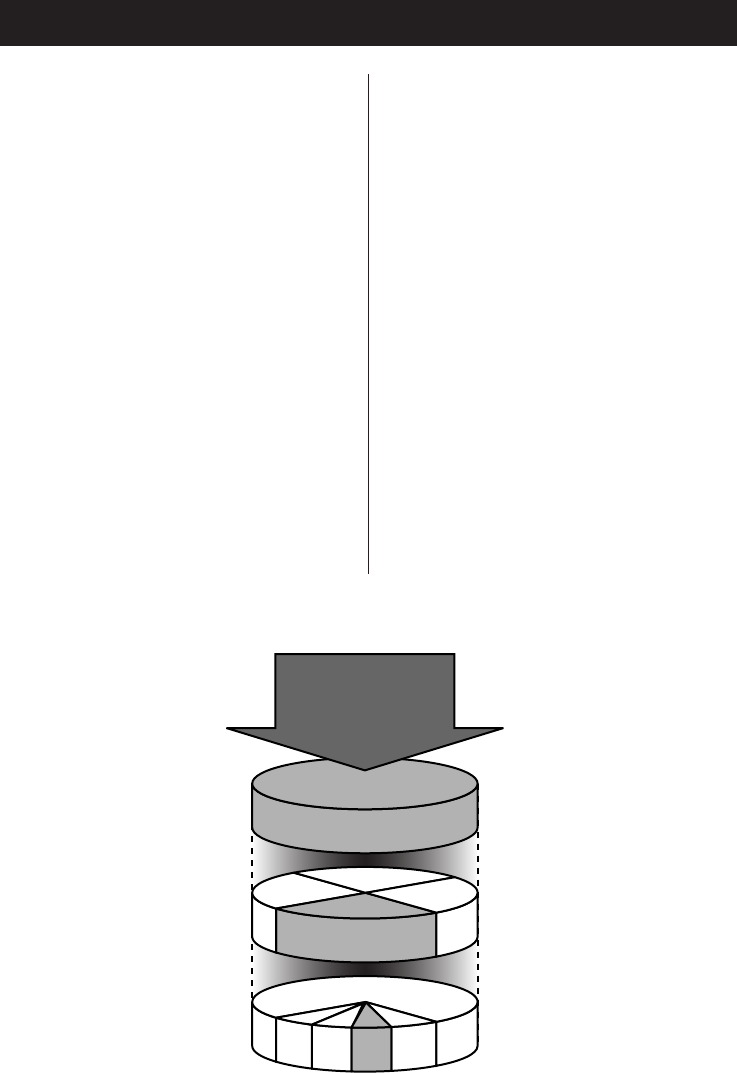
5
With this unit you can receive and listen to
Digital Audio Broadcast (DAB) programmes.
DAB uses digital, not analogue signals,
resulting in near CD-quality audio with
virtually interference-free reception. Along
with superior quality audio, DAB can also
deliver additional audio channels and text. In
the future, computer data and images are
also possible.
Digital radio is broadcast as groups of data
called Ensembles or Multiplexes. Each
Ensemble can contain a number of stations
(services) and each station contains a primary
service and can contain secondary services as
illustrated in the following diagram.
Each Ensemble is transmitted in a set
frequency range and received by this unit for
decoding. You can receive Ensembles
broadcast in the 174-240 MHz (Band III) or
1453-1490 MHz (L-band) frequency band
and store the services in each Ensemble for
you to access. The number of Ensembles you
receive depend on your location. Channels
used in the UK are in the range 10A to 12D,
and for international 5A to 13F. For L-band
the channels of LA to LW are available.
Ensembles and stations have labels (names)
that are used to identify them. Instead of
needing to know the particular frequency of
your favourite broadcast, you can simply
select the station name. Secondary services
and additional data such as text or Ensemble
information are also available.
DAB SIGNAL
ENSEMBLE
STATIONS
(PRIMARY
SERVICES)
SECONDARY
SERVICES
Parliament
BBC Radio 4
BBC
National
DAB
1
1
2
3+
1
2
3
4+
About DAB


















